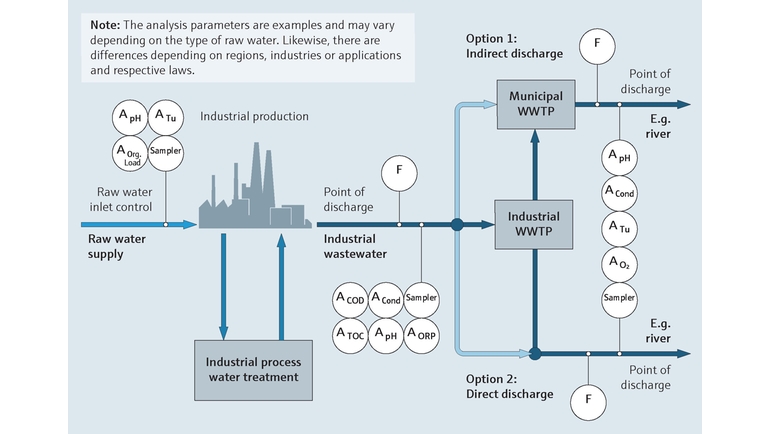Industrial Waste Water Treatment-- Enhance Efficiency with Personalized Water Treatment Solutions
Industrial Waste Water Treatment-- Enhance Efficiency with Personalized Water Treatment Solutions
Blog Article
Secret Strategies in Industrial Waste Water Treatment Procedures
The treatment of industrial wastewater is an essential aspect of environmental administration, including an array of strategies designed to reduce the effect of pollutants. Innovations in technologies such as membrane filtration and advanced oxidation processes provide ingenious options for improving therapy efficiency.
Physical Therapy Approaches
Just how properly can physical therapy approaches resolve the intricacies of commercial wastewater? Physical therapy techniques play an essential function in the preliminary stages of wastewater administration, focusing primarily on the removal of solids and huge particulates. Strategies such as filtering, sedimentation, and flotation are important for decreasing the concentration of put on hold solids, consequently improving the efficiency of subsequent therapy processes.
Sedimentation involves the gravitational settling of solids, permitting for the separation of larger materials from the wastewater. This approach is especially effective in clearing up water prior to biological or chemical treatments.
Furthermore, flotation techniques, which utilize air bubbles to raise suspended solids to the surface for elimination, work in dealing with wastewater with high concentrations of fats, oils, and oils. Overall, physical therapy methods serve as a crucial primary step in the detailed management of industrial wastewater, making certain that the load on succeeding therapy stages is lessened and boosting overall treatment efficiency.
Chemical Treatment Methods
While physical treatment approaches lay the foundation for effective wastewater monitoring, chemical treatment techniques are vital for resolving the extra intricate contaminants often located in industrial effluents. These approaches use numerous chemical representatives to speed up, counteract, or oxidize dangerous compounds, ensuring a much more comprehensive elimination of pollutants.
One usual method is coagulation and flocculation, where chemical coagulants such as light weight aluminum sulfate or ferric chloride are included in advertise the aggregation of suspended fragments. This process boosts solid-liquid separation, decreasing turbidity and boosting water quality. Furthermore, neutralization procedures are employed to change the pH of wastewater, making use of acids or bases to reduce the effects of acidic or alkaline streams, specifically.
Oxidation-reduction reactions play a vital duty in degrading organic impurities and pathogens. Chemical oxidants like hydrogen, chlorine, or ozone peroxide are utilized to break down complicated natural substances, making them much less harmful or a lot more eco-friendly. Additionally, advanced oxidation processes (AOPs) integrate numerous oxidation strategies to enhance pollutant removal effectiveness.
Organic Therapy Procedures
The performance of wastewater therapy is dramatically boosted by organic therapy procedures, which harness the natural metabolic activities of microbes to decompose raw material and eliminate pollutants. Industrial Waste Water Treatment. These procedures mainly include cardiovascular and anaerobic digestion, each tailored for specific kinds of wastewater
Cardio therapy processes use oxygen to support microbial development, advertising the malfunction of organic pollutants into co2 and water. Usual techniques include activated sludge systems, where oygenation containers assist in the mixing of wastewater with her response microorganisms, and flowing filters, which motivate biofilm development on media surface areas.
Alternatively, anaerobic therapy processes take place in the lack of oxygen, utilizing anaerobic microorganisms to disintegrate raw material, leading to biogas production, an eco-friendly power source. Anaerobic digesters are usually utilized in industrial setups for this purpose, properly minimizing the volume of sludge while producing important biogas.
The option of a biological therapy technique relies on wastewater attributes, treatment goals, and governing requirements. The integration of biological procedures in wastewater treatment not just enhances contaminant elimination effectiveness yet also promotes sustainability by decreasing chemical usage and sustaining resource recuperation.
Advanced Oxidation Processes

Typical AOP strategies include Fenton's reagent, ozonation, and photocatalysis. Fenton's reagent, a combination of hydrogen peroxide and ferrous iron, militarizes the formation of hydroxyl radicals, making it efficient for dealing with wastewater having phenolic compounds and other stubborn materials.
AOPs offer a number of benefits, including decreased sludge manufacturing and the capacity to deal with wastewater with high concentrations of organic toxins. Nonetheless, the application of AOPs calls for mindful consideration of functional criteria and cost-effectiveness, see post ensuring that these advanced methods are suitably incorporated right into existing wastewater therapy systems.
Membrane Filtering Technologies

Microfiltration is reliable for removing suspended solids and microorganisms, while ultrafiltration targets smaller organic molecules and infections. Nanofiltration links the void between ultrafiltration and reverse osmosis, efficiently eliminating divalent ions and natural substances. Reverse osmosis supplies the highest degree of filtration, used mainly for desalination and eliminating mono-valent ions.
Membrane innovations use countless benefits, consisting of low power usage compared to typical therapy approaches, modular style for scalability, and the possibility for water healing and reuse. Nonetheless, obstacles such as membrane layer fouling and the demand for normal upkeep need to be dealt with to make sure system effectiveness. On the whole, membrane layer filtering innovations represent an important component of modern commercial wastewater treatment techniques, promoting sustainability and source preservation in water administration.
Conclusion
Finally, commercial wastewater therapy employs a varied selection of methods, including physical, chemical, organic, and progressed methods. Each approach plays an essential function in efficiently addressing numerous pollutants, enhancing water top quality, and promoting source sustainability. The combination of these techniques cultivates an extensive treatment method, guaranteeing that commercial effluents satisfy governing requirements while minimizing ecological impact. Proceeded developments in these techniques will better enhance the performance and efficiency of wastewater therapy processes in commercial setups.
The treatment of industrial wastewater is a critical element of ecological management, including an array of strategies developed to alleviate the influence of contaminants.How efficiently can physical therapy approaches address the complexities of industrial wastewater?Advanced oxidation procedures (AOPs) find here stand for a sophisticated approach in industrial wastewater treatment, created to properly degrade organic pollutants that are typically immune to standard therapy approaches (Industrial Waste Water Treatment).In verdict, commercial wastewater therapy uses a varied selection of strategies, consisting of physical, chemical, organic, and progressed approaches. Proceeded innovations in these methodologies will further improve the efficiency and performance of wastewater therapy procedures in commercial setups
Report this page